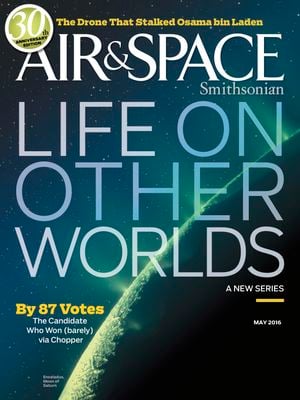Technically Speaking: Stealth Before Stealth
Practicing the art of invisibility in the 1970s.
/https://tf-cmsv2-smithsonianmag-media.s3.amazonaws.com/filer/fa/ca/faca6e9c-436a-4953-9948-d0ac06a9708f/minuteman_iii.jpg)
Many people think Stealth technology was among the revolutionary advances of the mid-1970s. But the roots extend back much further. There is a tangled web of R & D strands from many commercial and government establishments that seldom if ever spoke with one another. The history of low-observable technology is still not complete.
And there are still mysteries: Some of the key stealth demonstrations in the 1970s, by both Northrop and Lockheed, took place at a radar cross-section (RCS) range at Gray Butte in California that was owned by McDonnell Douglas. (An object’s radar cross-section is a measure of its radar reflectivity.) But Mac’s was not heavily involved in stealth aircraft, so why did the company have one of the nation’s best ranges?
Here’s another head-scratcher: From the earliest days of the F-117, when its existence was still secret, the program included a Royal Air Force pilot.
In the early 1990s, my Jane’s colleague Nick Cook discovered that this remarkable access had been granted to the United Kingdom in part due to early British contributions to stealth technology, which were documented in something called the Dawson Report.
Who was Dawson? What were these British advances?
The answers reside in a small-press book on British rocket research—C.N. Hill’s A Vertical Empire, published in 2001— and in other sources, including a British Library Board oral history interview with British rocket “boffin” Roy Dommett, who died last November at 82.
These sources indicate that in the early 1950s, members of Britain’s Royal Aircraft Establishment (RAE) at Farnborough started looking at what they called “radar echoing area”—the term “RCS” was not yet in use. Their leader was Grant Dawson, a mathematician and electrical engineer.
The first RAE experiments were low-RCS modifications to bombers, but the knights of the Air Ministry concluded that money would be better spent on electronic jamming equipment. And by the mid- to late 1950s, it was clear that the United Kingdom would not build a new high-altitude bomber. Instead, nuclear weapons would be rained on the Soviet Union by ballistic missile. One—the de Havilland Blue Streak— was already being developed.
British planners expected that the Soviets would develop anti-ballistic-missile (ABM) weapons, and the Farnborough team concluded that one way to defeat them would be to build a reentry vehicle (RV) with a smaller RCS. That way, the early-warning radars would not pick up the warhead in time to intercept it.
The U.S. RVs at the time were blunt-ended and non-stealthy, but the RVs for Blue Streak were conical, piercing the atmosphere sharp-end first. Some designs included a coating made of a phenolic plastic reinforced with asbestos fibers, then loaded with carbon black to absorb radar waves.
The Saunders-Roe company developed a six-ton rocket, Black Knight, that could lob a scaled RV out of the atmosphere, and the United Kingdom established a test range at Woomera in Australia. Tests started in September 1958. In April 1960 Blue Streak was canceled; it was feared that, given the short flight distance between Eastern Europe and the United Kingdom, the missiles would be too easy to destroy on the ground, even in their silos. But transatlantic technology exchanges continued, and eventually a package of papers and data from the RAE’s stealth aircraft and RV studies, the Dawson Report, came into U.S. possession.
From 1962 to 1965, Black Knight rockets, British RVs, and U.S. radars were all tested at the Royal Australian Air Force’s Woomera Test Range in South Australia. The tests were known as Project Dazzle. By 1970, U.S. Minuteman strategic missiles were being equipped with Mk. 12 conical RVs to defeat Russia’s ABM systems. Perhaps those were the mysterious Dawson Report’s vital contribution.
To support the Mk. 12 program, the Douglas company built an RCS range in the Mojave Desert. McDonnell acquired Douglas in 1967, and thus came to own, in 1975, the only RCS range in the region. In the 1980s, Northrop and Lockheed built their own Antelope Valley ranges. Northrop located one on a site called Tejon Ranch, in the foothills of the Tehachapi mountains. Lockheed Martin chose a site in Helendale, just west of the Mojave River. Gray Butte has long been decommissioned as an RCS range, and is now the flight test center for General Atomics, makers of the Predator and Reaper unmanned air vehicles.
Dawson went on to specialize in spacecraft antennas. Details of his work on stealth technology remain classified.
/https://tf-cmsv2-smithsonianmag-media.s3.amazonaws.com/accounts/headshot/32_AM14_BillSweetman_head.jpg)

/https://tf-cmsv2-smithsonianmag-media.s3.amazonaws.com/accounts/headshot/32_AM14_BillSweetman_head.jpg)